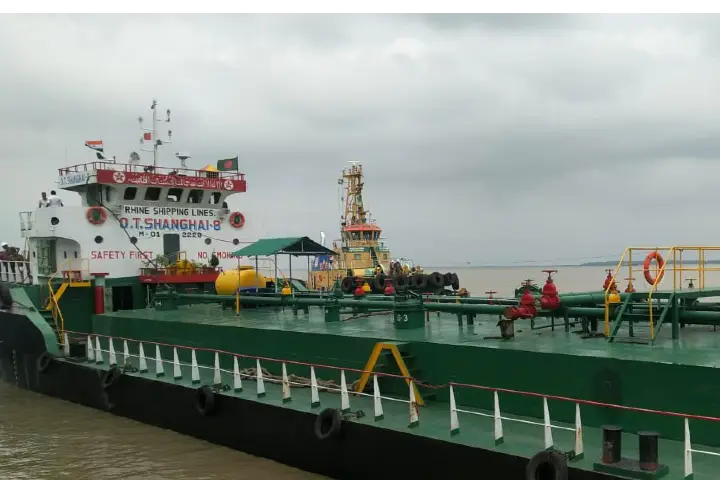Syama Prasad Mookerjee Port (SMP), erstwhile Kolkata Port is gradually turning into a critical logistics hub in the region now as it gets connected with Mongla and Chittagong ports in Bangladesh and Sittwe port in Myanmar. India’s Act East Policy and Bay of Bengal Initiative for Multi-Sectoral Technical and Economic Cooperation (BIMSTEC) along with the thrust on deeper integration with the northeast region has reset the dynamics of SMP, which is also used by the neighbouring landlocked Nepal and Bhutan for transportation of their goods.
Last week, SMP inked a memorandum of understanding with the NTPC Green Energy (NGEL), a subsidiary of the NTPC to set up a green hydrogen hub at the port, a move that is expected to transform the operations of the port while giving a push to India’s maritime operations in the eastern side. Earlier this month, NTPC inked a similar partnership agreement up with V.O Chidambaranar Port Authority (VOCPA) in Tamil Nadu’s Tuticorin.
As part of the National Hydrogen Mission, aimed at transforming India as a lead producer and supplier of green hydrogen, shipping and port operations will play a critical role in driving its trade. Ports are therefore being developed for supporting the exports requirement of green energy.
In 2022-23, cargo handling of the port increased by 13 per cent year-on-year at a record 65.66 million tonnes (MT), the Ministry of Ports, Shipping and Waterways revealed. The same year, the port also registered its highest ever growth of traffic of 7.5 MT, compared to the previous years.
The figure is expected to increase significantly in the coming years. What is being touted as a game changer is the movement of cargo to the northeast using the ports in Bangladesh.
Last year, trans-shipment of cargo movements began between Kolkata to the northeast through Bangladesh’s Mongla port marking a new era in connectivity for New Delhi and Dhaka.
SMP will also be the pillar of the Kaladan Multi-Modal Transit Transport Project (KMTTP), jointly identified by India and Myanmar.
Besides, SMP, Haldia port near Kolkata is also key for regional connectivity. The ports in West Bengal had been struggling for several years. According to Mint, low depth caused by heavy siltation in the Hoogly river caused severe impediment in ship movement leading to a drop in cargo volumes. Kolkata’s cargo volume has dropped from a historic peak of 57.32 MT in 2007-08 to 39.88 MT in 2012-13, it said.
India with 7,517 km-long coastline and 14,500 km of potentially navigable inland waterways and occupies a strategic location on major international major trade routes, a KPMG report in 2019 said. The Narendra Modi government’s Sagarmala Programme launched in 2015 is aimed at fostering an integrated port-centric logistics network in the country.
Also read: As Bay of Bengal becomes centre of geopolitical wrangling, India must push for a robust BIMSTEC




















